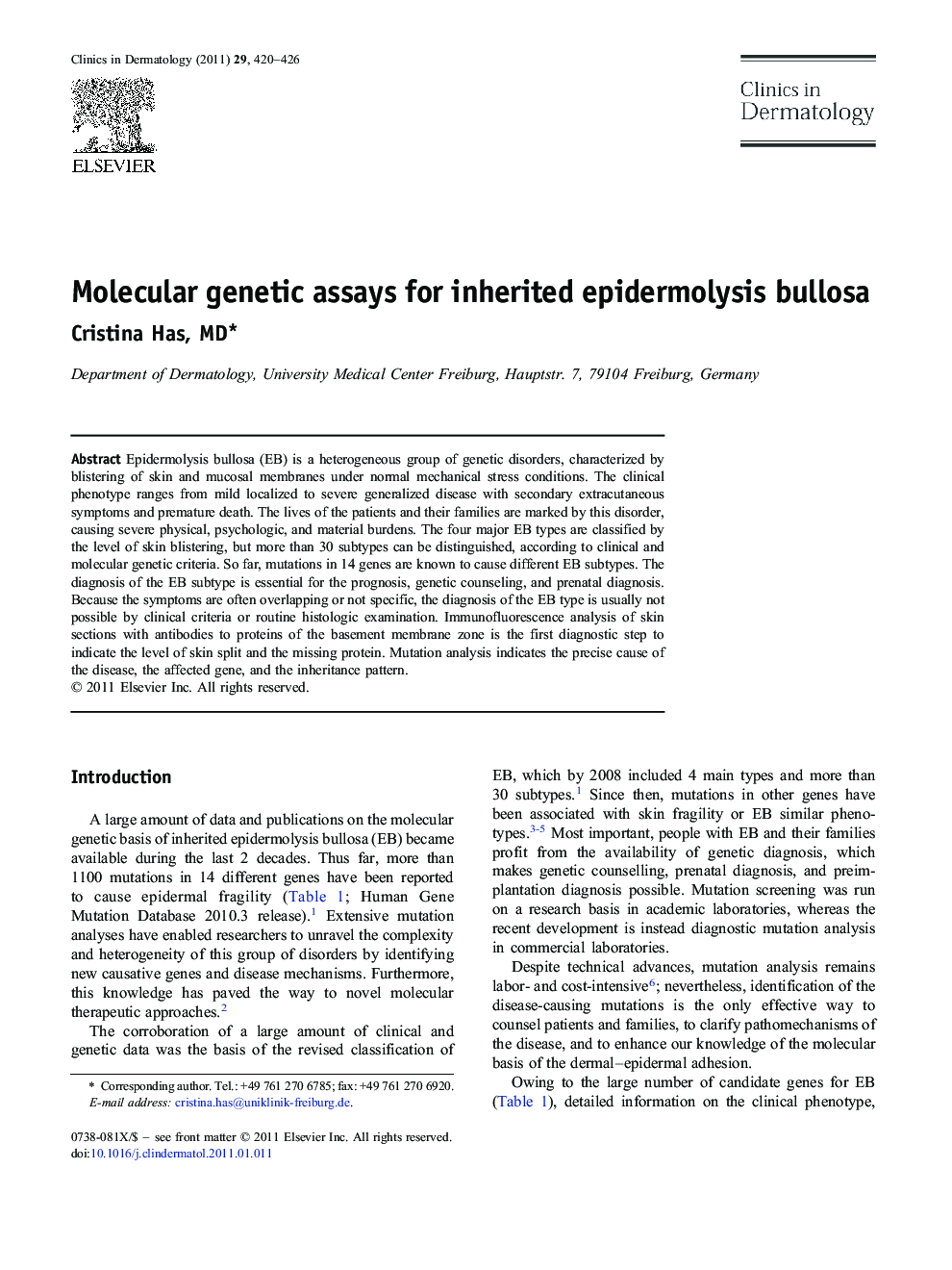| Article ID | Journal | Published Year | Pages | File Type |
|---|---|---|---|---|
| 3194565 | Clinics in Dermatology | 2011 | 7 Pages |
Epidermolysis bullosa (EB) is a heterogeneous group of genetic disorders, characterized by blistering of skin and mucosal membranes under normal mechanical stress conditions. The clinical phenotype ranges from mild localized to severe generalized disease with secondary extracutaneous symptoms and premature death. The lives of the patients and their families are marked by this disorder, causing severe physical, psychologic, and material burdens. The four major EB types are classified by the level of skin blistering, but more than 30 subtypes can be distinguished, according to clinical and molecular genetic criteria. So far, mutations in 14 genes are known to cause different EB subtypes. The diagnosis of the EB subtype is essential for the prognosis, genetic counseling, and prenatal diagnosis. Because the symptoms are often overlapping or not specific, the diagnosis of the EB type is usually not possible by clinical criteria or routine histologic examination. Immunofluorescence analysis of skin sections with antibodies to proteins of the basement membrane zone is the first diagnostic step to indicate the level of skin split and the missing protein. Mutation analysis indicates the precise cause of the disease, the affected gene, and the inheritance pattern.
